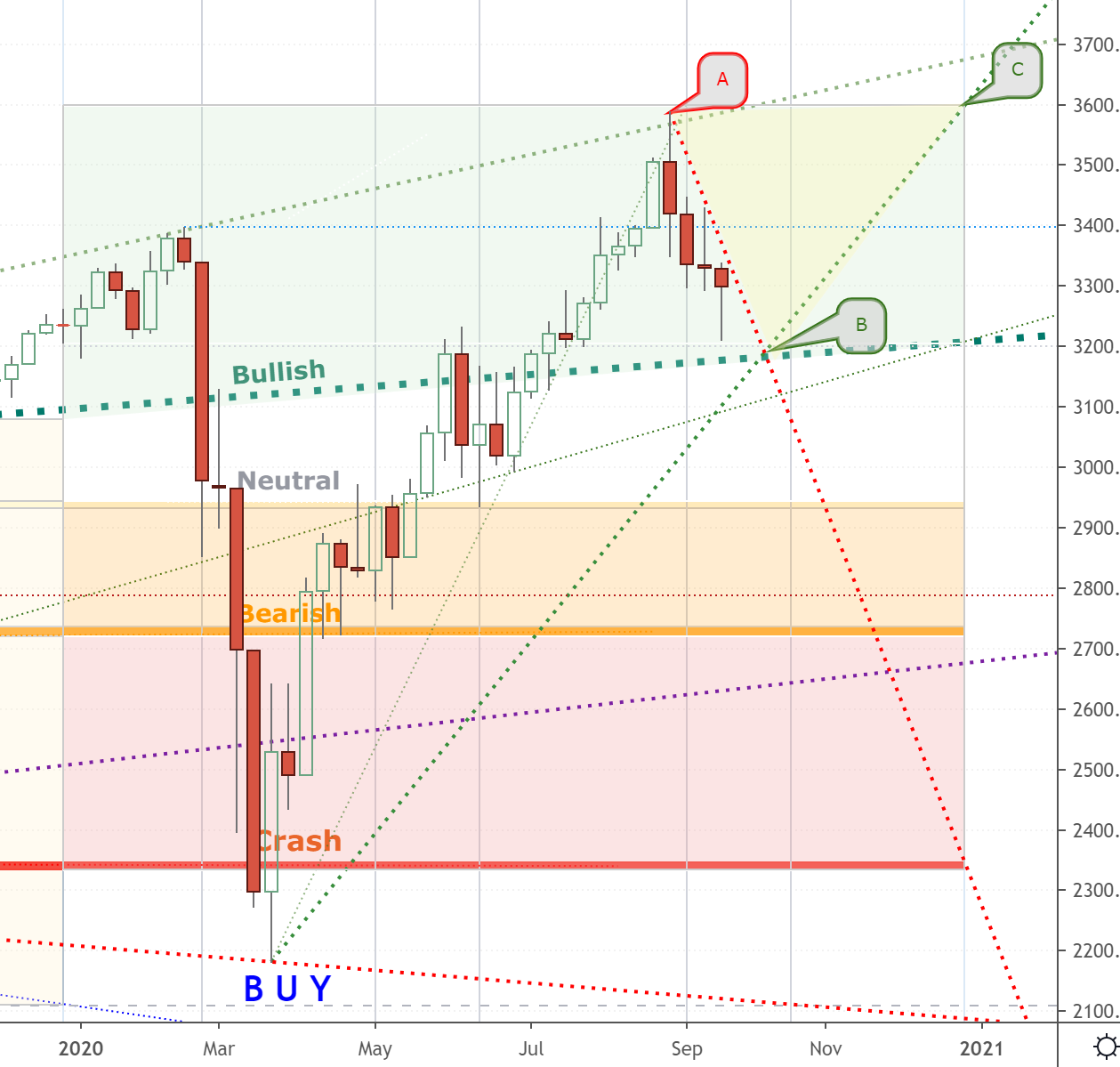SPX Targets For The Week Of Sept. 28
With three months remaining until the end of the year, it is time to shift our focus to the SPX outlook for the remainder of 2020.
Last week we mentioned that both GS and JPM have a 3600-year-end target for the SPX, which matches our yearly upside target. The ability of the index to reach this target boils down to the reaction of the SPX to one bearish (A) and two bullish (B & C) trendlines/angles:

The sooner the SPX breaks into the ABC triangle, the better the odds of reaching the target. A drop into the neutral zone will diminish the chances of doing so considerably.
The short-term technical outlook is mixed, since the weekly signal remains bearish, while the daily signal turned neutral. Market breadth, however, bottomed out as expected, and this is setting up the stage for the next sideways/up phase. For the weekly signal to turn bullish, the SPX needs to break above 3350, which happens to be our upside target for next week. The downside target is at 3150.
*Please note that the signals are provided for informational purposes only. They are in effect as of the close on Friday and may change as soon as the markets re-open.
Charts, signals, targets and data courtesy of OddsTrader, CIT for TradingView and NinjaTrader 8
For intraday charts and update follow us on TradingView
Disclaimer: Futures and forex trading contains substantial risk and is not for every investor. An investor could potentially lose all or more than the initial investment. Risk capital is money ...
more



Setting targets for the future is an interesting activity, I suppose, and possibly more certain than wishing on a star.
But exactly as the disclaimer stated: "Futures and forex trading contains substantial risk", and thus should not include any funds that one can not afford to lose. That frequently repeated caution applies well in this instance, as I see it.